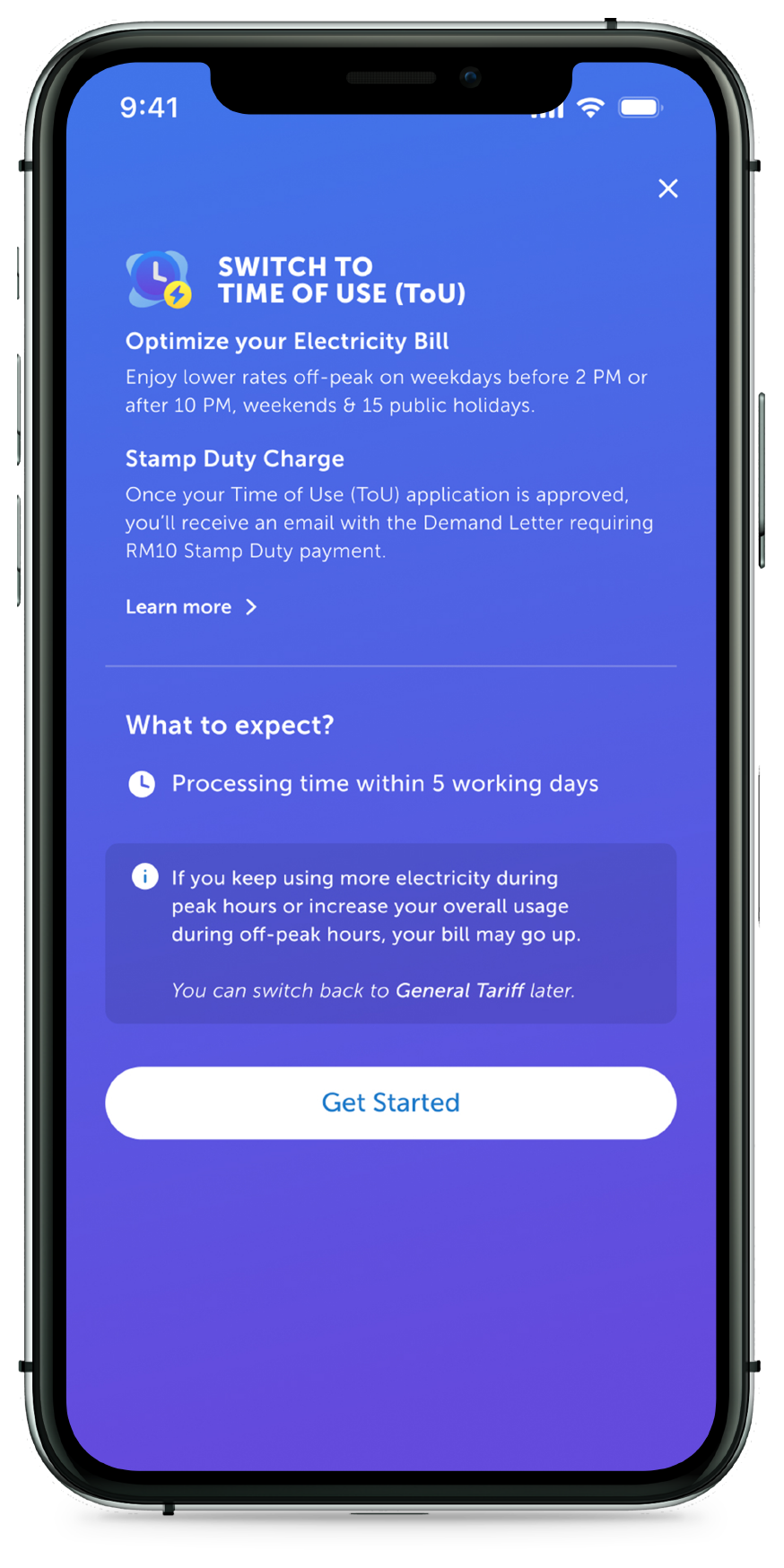ToU Tariff Expansion
Time-of-Use pricing for optimised electricity consumption
Time of Use (ToU) tariff scheme offers different tariff rates at different times of the day. For example, tariff rates during Off-Peak period will be lower than Peak period. In addition, for Non-Domestic Medium Voltage and High Voltage customers, Maximum Demand which occurs during Off-Peak period will not be charged.
ToU scheme has 2 time zones (Peak and Off-Peak):
-
On Monday to Friday
Peak : 2 PM to 10 PM
Off-Peak : 10 PM to 2 PM
-
On Saturday and Sunday
Off-Peak throughout the day (24 hours)
What are the benefits of switching to the Time of Use (ToU) tariff?
Lower Monthly Electricity Bills
You can enjoy lower electricity rates when you shift your usage to Off-Peak hours — before 2 PM or after 10 PM on weekdays, and all day on Saturday and Sunday.
Example: A household that typically runs the washing machine, water heater and air conditioner in the evening can shift some usage to morning or late night to reduce their electricity bill.
Maximise Business Benefits
Flexible ToU rates allow businesses to optimise operations by shifting energy usage to Off-Peak hours, which helps lower operating costs.
Example: A factory that operates heavy machinery or runs large-scale production lines during the day can shift part of its operation to off-peak hours (before 2 PM or after 10 PM) to take advantage of the lower rates.
*Note: Check your usage pattern and your ability to shift your consumption to the designated Off-Peak period before opting for ToU tariff scheme to enjoy full benefits of lower Off-Peak rates.
For more information on ToU, please refer the FAQ





